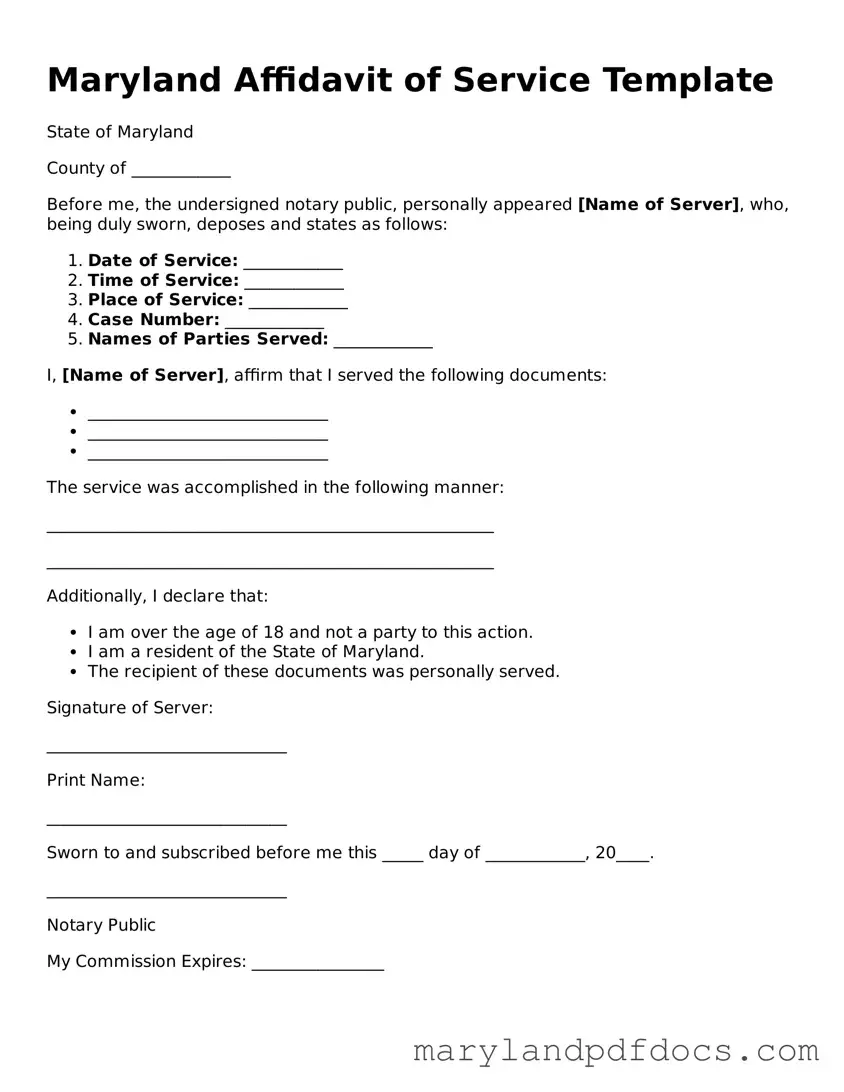What is the Maryland Affidavit of Service form?
The Maryland Affidavit of Service form is a legal document used to confirm that a particular legal document has been delivered to a party involved in a legal proceeding. This form serves as proof that the recipient received the documents, which is crucial for the court process to proceed smoothly. It helps establish that the party was properly notified of the legal actions against them.
When is the Affidavit of Service required?
An Affidavit of Service is typically required whenever a party needs to demonstrate that legal documents, such as summonses, complaints, or motions, have been served to another party. This form is essential in various legal contexts, including civil cases, family law matters, and more. Failing to provide this affidavit can lead to delays or complications in legal proceedings.
Who can serve documents and complete the Affidavit of Service?
In Maryland, documents can be served by a variety of individuals. This includes a sheriff, a process server, or even a friend or family member who is over the age of 18. The key requirement is that the person serving the documents must not be a party to the case. After serving the documents, the individual must complete the Affidavit of Service to confirm that the delivery took place.
What information is needed on the Affidavit of Service?
The Affidavit of Service must include specific information to be valid. This includes the name of the person who served the documents, the name of the person who received them, the date and time of service, and the method of service. Additionally, it may require details about the documents served. All this information helps ensure the affidavit is complete and can be accepted by the court.
How do I file the Affidavit of Service with the court?
Once the Affidavit of Service is completed, it must be filed with the court where the case is pending. This usually involves submitting the affidavit to the clerk's office. It is important to file the affidavit promptly after service to avoid any issues with the timeline of the case. Some courts may allow electronic filing, while others may require a physical submission.
What happens if the Affidavit of Service is not filed?
If the Affidavit of Service is not filed, it can create significant problems for the case. The court may question whether the other party was properly notified, which can lead to delays or even dismissal of the case. It is crucial to ensure that this document is completed and submitted on time to avoid complications in the legal process.
